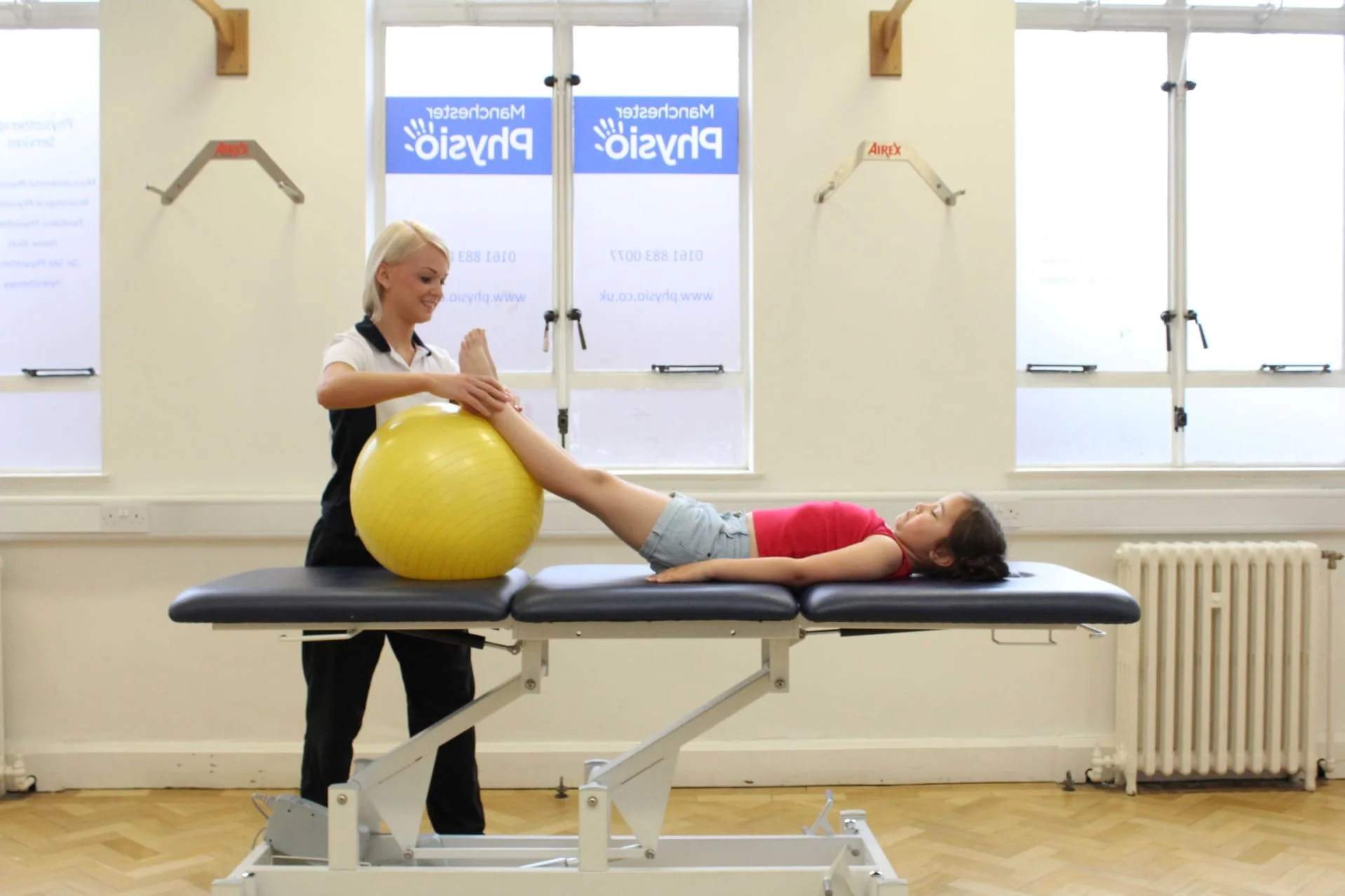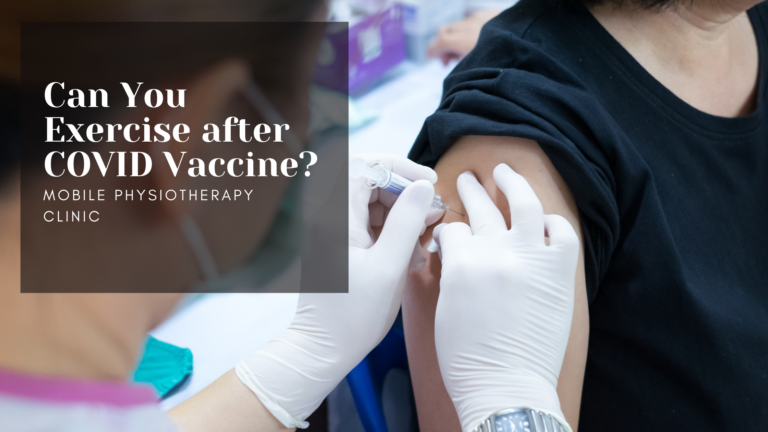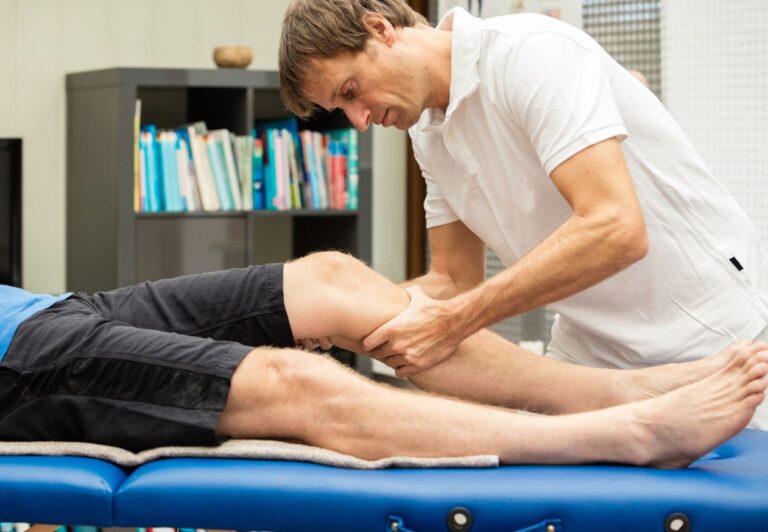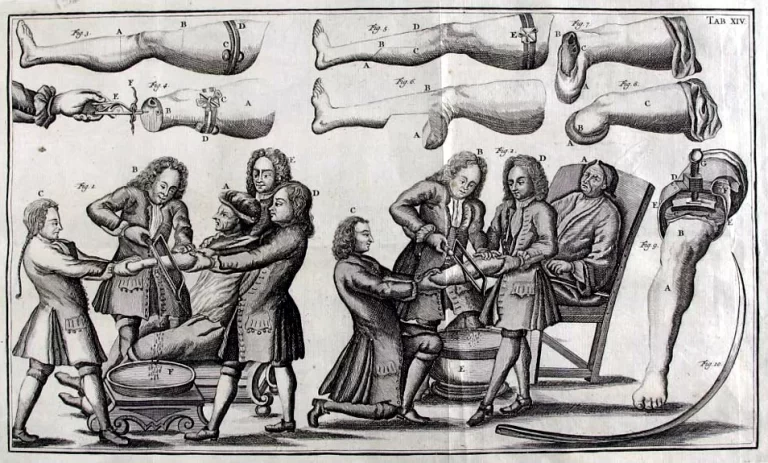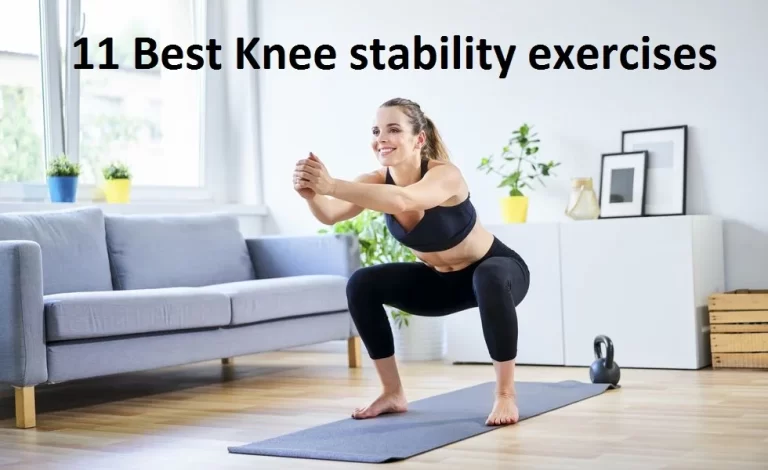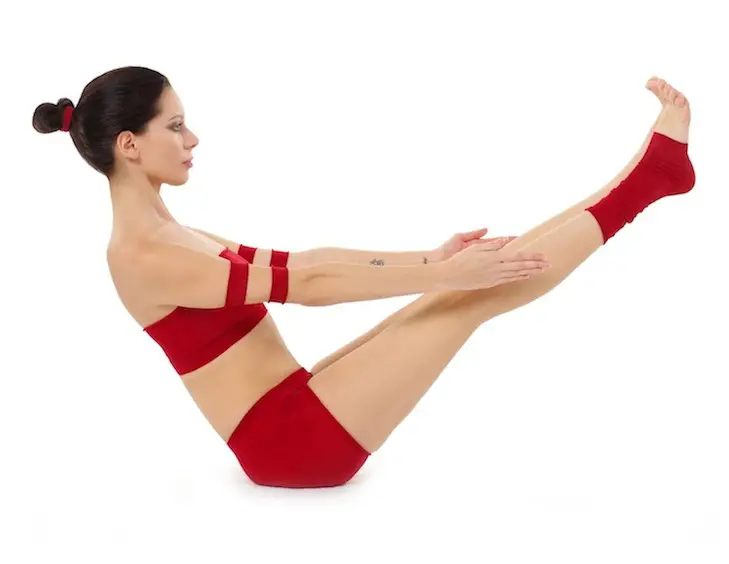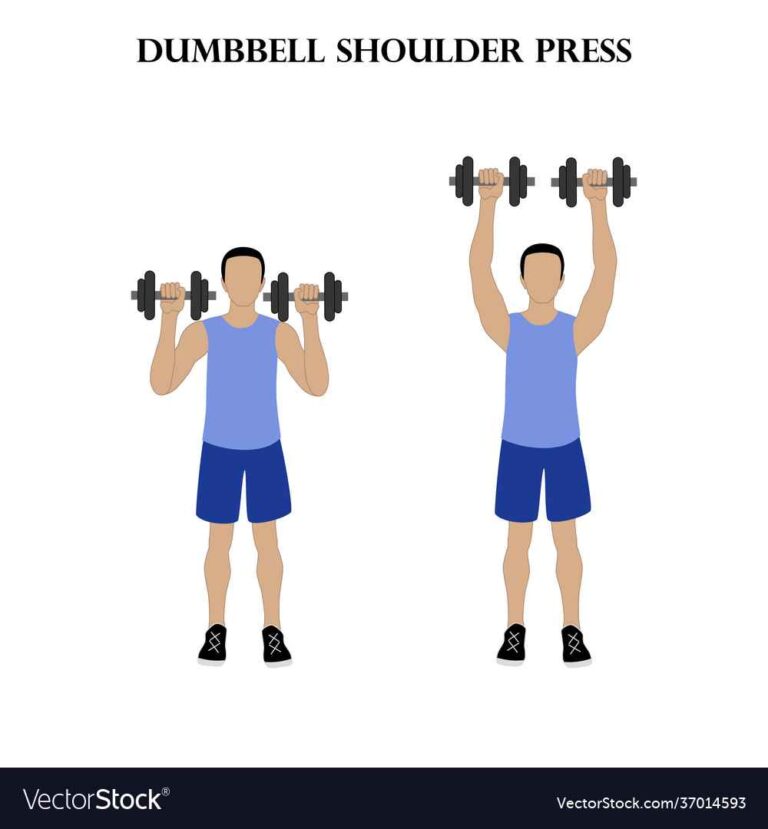12 Best Exercises For Knee Valgus Deformity
Importance of Exercises for Knee Valgus Deformity
Knee valgus deformity, also known as genu valgum or knock-knee, is a condition where the knees angle inward and touch each other when the legs are straightened. This condition can lead to potential pain and discomfort, and in severe cases, it might contribute to other musculoskeletal issues. However, it’s important to note that the severity of knee valgus can vary from mild to severe, and treatment options can differ accordingly.
Exercise can play a crucial role in managing and potentially improving knee valgus deformity. While exercise alone may not completely correct the condition, it can help strengthen the muscles around the knees and hips, thereby providing better support and stability. Additionally, certain exercises can improve overall lower body alignment and posture, which may indirectly contribute to the management of knee valgus.
When designing an exercise program for knee valgus, it is important to consider a holistic approach that includes strengthening exercises, stretches, and mobility work. Moreover, it’s essential to consult a healthcare professional or a certified physical therapist to create a tailored exercise plan that suits the individual’s specific condition and requirements. They can provide guidance on appropriate exercises, proper form, and the intensity of the workout, ensuring that the exercise regimen is both safe and effective.
With consistent and appropriate exercise, individuals with knee valgus deformity can potentially experience improved muscle strength, joint stability, and overall functional movement, leading to a better overall quality of life.
What is a Knee Valgus Deformity?
Knee valgus deformity, also known as genu valgum or simply knock-knee, is a condition characterized by the inward angling of the knees when the legs are straightened. This results in the knees touching each other while the ankles remain apart. Knee valgus can be seen in both children and adults, and its severity can range from mild to severe.
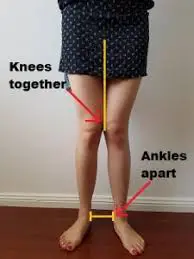
Knock-knee is a more popular term for genu valgum. There is a space of at least 8 centimeters (3.1 inches) between the ankles when a person with genu valgum stands with their knees together. The knees will seem to press closer to one another.
Children are most commonly affected, usually between the ages of three and six. Most young children’s ailments will resolve on their own by the time they are seven years old. Rarely, genu valgum could last throughout adolescence. In other situations, it could occur in older adults or youngsters as a result of an underlying illness.
A person may require official treatment if genu valgum does not go away on its own or if it appears later in life.
Preventing genu valgum is usually not feasible. Nonetheless, there are a number of therapeutic choices that might help reduce some of the symptoms.
If a medical professional can determine and treat the underlying cause, knock-knee may be prevented before it occurs.
Causes
Generic diseases and metabolic bone abnormalities are two possible causes of genu valgum, but the latter is not always evident. But the majority of genuvalgus situations are not harmful.
Genu valgum risk factors include:
- accident or disease that affects the skeletal dysplasia of the leg or knee
- lysosomal storage disorders,
- vitamin D insufficiency
- rickets (Morquio syndrome)
- obesity
- arthritis, especially of the knee
- calcium deficiency
Symptoms
Definite evident separation of the ankles while the knees are together is one of the signs of genu valgum. The way someone walks could change as they adjust to not having a space between their knees.
Walking balance issues and a limp will be the result of this. Although there are usually no symptoms, a person may occasionally feel unease in their ankles, hips, feet, or knees.
Why do knees buckle?
Men are also affected by valgus knee collapse, albeit it is more frequent in women (which is due to a broader pelvis compared to knee posture).
I have to work on this personally and see it a lot (particularly if injury causes me to become less active). If you don’t have it fixed, you may get IT band syndrome, patellofemoral knee discomfort, or even a dangerous ACL tear.
Therefore, a buckling knee is a problem waiting to happen in addition to being unsightly. Your knees may give way under stress for a variety of reasons, some of which may be personal to you. First off, if your hips are not activated or strong enough, your knees will stray.
The muscles in the hip ball and socket are essential for effectively stabilizing a joint that permits extensive mobility, particularly for fighters with head-height kicks.
Specifically, if your glute medius muscle is underactive or weak, it will be harder for you to track your knee appropriately and it will collapse inward when the load is applied.
Just notice the differences between the two “tuck jumping” positions in the page’s montage image.
Second, it’s possible that you have “flat feet,” a condition in which the inside arch of your foot folds inward, turning your ankle inside and engulfing your knee.
Thirdly, it’s possible that your ankles don’t move very freely. You should focus on developing your ability to maintain your (bare) foot level on the floor and stretch your knee past your toes by at least 125mm (5″).
Diagnosis
A doctor will usually perform a physical examination to establish a diagnosis, at which time they will take a thorough medical history. If the patient is a youngster, the physician will examine the patient’s leg growth trajectory.
If the patient reports pain, the doctor will probably ask them to explain the location, intensity, and frequency of the discomfort.
The physician will also consider:
- knee alignment during standing gait if legs are not the same length
- A physician could also check for irregular wear patterns on the shoe’s soles.
- An MRI or X-ray may be ordered in certain situations by a physician to assess the bone structure.
In addition, the physician must ascertain whether an underlying cause exists. whether none, the doctor will often advise waiting to see whether the illness gets better on its own.
9 Best Exercises to correct Knee Valgus Deformity
Single-Leg Band Stretches
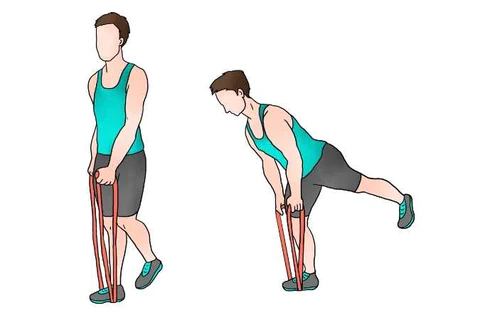
This workout helps develop the hip flexor muscles by using a resistance exercise band.
- Stand parallel to the resistance band with it securely fastened to a steady object at ankle height.
- Around the ankle that is farthest away from the anchoring item, wrap the band.
- Step out to the side with your leg to extend the resistance band. After extending your leg as far as it will go, maintain the pose for two seconds before slowly releasing it to return to a neutral position.
- With each leg, repeat this ten to fifteen times.
Leaning Ankle Band Stretches
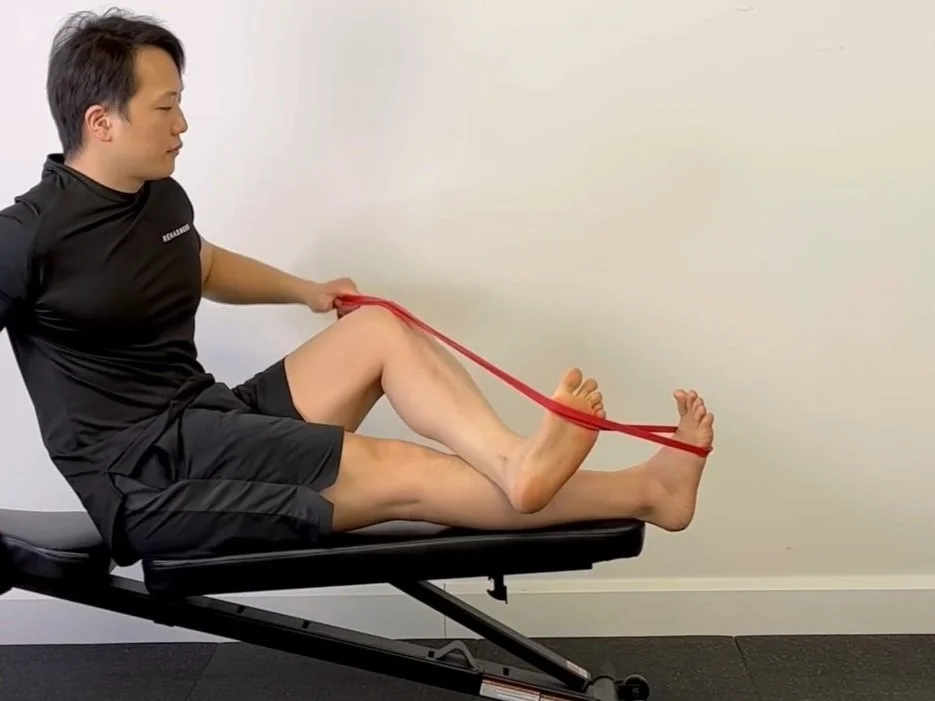
This exercise strengthens the ankles and stretches the hip flexor muscles.
- Place an anchor at the end of the resistance band, perpendicular to the anchor, and secure it to something durable, approximately thigh height.
- Step your other foot out of the way so that your feet are wider than hip-width apart after putting the band around the closest ankle.
- Bend the knee that is not attached to the resistance band as you lean away from it. Continue to place both feet firmly. The band should be tugging on the inside of your ankle.
- Stretch as far as you can, maintain the pose for two seconds, and then stand back up.
- With each limb, continue this from ten to fifteen times.
Exercise Band Squats
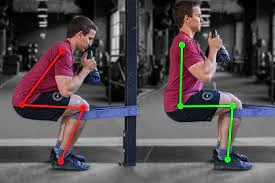
- Squats work your hamstrings and quadriceps, and using an exercise band activates your hip flexors.
- Place an exercise band around your thighs in a circular motion while standing with your feet hip-width apart. Although the band should be tight, it shouldn’t be difficult for you to stand with your feet apart.
- Gently crouch down while maintaining your thighs apart and bending your knees. Your thighs and hips should start to burn.
- Maintain a straight back.
- After maintaining the squat for a few seconds, stand back up.
- This may be done fifteen times in a set. Try to finish three sets every day.
Kickbacks
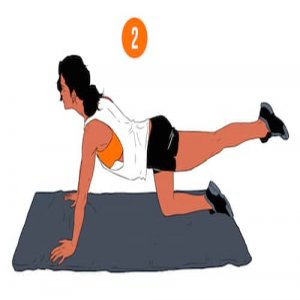
- In addition to strengthening the muscles on the outside of your thighs, this exercise assists in coordination with the stepping motion.
- Position your feet hip-width apart and place an exercise band around your lower thigh.
- Lift one leg slowly back and up, as if you were about to kick a ball.
- After maintaining this posture for a few seconds, release it to resume its standing position.
- Do this workout ten to fifteen times for each leg.
Lunges
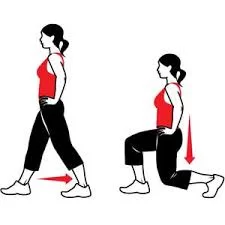
- Your hips and leg muscles will become more coordinated and stronger after doing this workout.
- Step one leg forward several feet while standing. Maintain a hand-hip position.
- Both knees should be bent to a 90-degree angle and should be pointing downward.
- Return to upright posture slowly.
- Ten to fifteen times, perform the procedure with both legs.
Side lunges
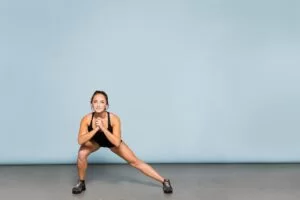
- Arrange your feet hip-width apart and hold your arms in front of you.
- Take a large, sideways step to the left.
- Bend at the knee and thrust the hip back as soon as the foot touches the ground.
- Get up and take a step back to neutral.
- After ten to twelve repetitions, change legs.
Lying abduction
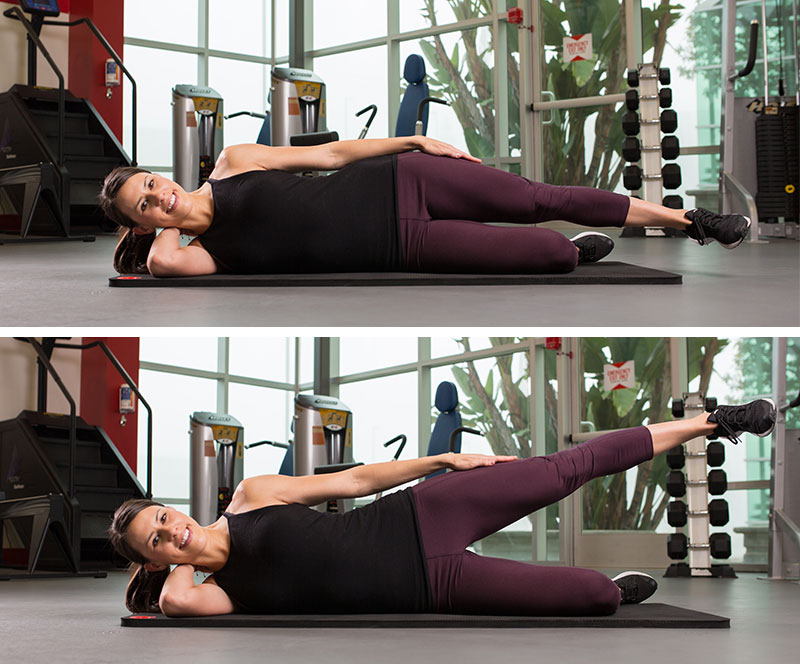
- Place your legs one on top of the other and lie on your left side.
- Raise your right leg to a 45-degree angle, then hold it there for a moment. Next, stoop the leg.
- Do the same with the opposite leg and repeat ten to twelve times.
Wall squat
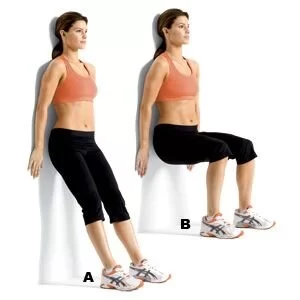
- Maintain a straight stance against a wall with your feet shoulder-width apart and your torso slightly away from the wall.
- Keep your abdominal muscles clenched and squat to no more than ninety degrees. For five to ten seconds, maintain and keep the stance.
- A person could be able to maintain the posture for longer with more practice.
- When performing this exercise, wrapping a resistance band over your knees might be beneficial.
Weight loss
- Genu valgum may be exacerbated by an individual who is overweight. Carrying more weight strains the knees and legs more, making knock-knee worse.
- An overweight person’s doctor will probably advise them to reduce weight by combining food and exercise.
Orthotics
To assist in improving a person’s gait—the way their foot contacts the ground when they walk or run—orthodontia inserts are put into their shoes. When a person has genu valgum—when one leg is longer than the other—this might be extremely useful.
For certain youngsters, orthotics may be recommended in addition to or instead of braces or splints by their doctors. The purpose of the braces is to assist in the proper growth of the bones.
Surgery
When a person has genu valgum, surgery is not usually the initial course of therapy. Surgery is often saved for situations with severe knock-kneed and when discomfort cannot be relieved by stretching exercises or weight loss.
Physicians employ a technique known as guided growth surgery on youngsters. A tiny metal piece is inserted into the knee by a surgeon. The bone grows more correctly in the direction indicated by this metal plate. The metal plate is removed during another surgery when the bone has been properly positioned.
Osteotomies can also be present in adults and older teenagers. Osteotomy is a procedure where a surgeon inserts a tiny metal plate into the knee, much to guided growth surgery. To maintain the knee’s correct position, the plate serves as a permanent brace.
A knee replacement may be advised by a physician in exceptional circumstances. A properly positioned prosthetic knee will treat the genu valgum in this instance.
The cost of any surgical operation can vary greatly depending on the procedure type, type of insurance, and patient’s insurance coverage. The intensity of the patient’s symptoms may also be a factor.
Surgical costs
Medicare beneficiaries may be required to pay $344 to $644 out of pocket for an osteotomy, depending on the location of the treatment.
If a patient has different insurance, the cost of guided growth surgery or an osteotomy may vary according to their particular plan.
Overview
A misalignment of the legs and knees is called genu valgum, or sometimes just “knock knees.” The legs bend inward because of the form or pull of the knee joint. The feet of a person with genu valgum do not contact when they stand with their knees together.
Children’s genu-valgum usually goes away on its own without treatment, although mild cases are widespread and usually don’t create issues. But for some, it results in knee discomfort and makes walking difficult. For those who have discomfort from genu valgum, there are several exercises that might help fix it.
FAQs
What muscles should be strengthened for knee valgus?
The popliteal, tibialis posterior and gluteus medius muscles are strengthened with exercise. The hip, knee, and ankle joints’ relative range of motion is influenced by these muscles.
What muscles are weak in the valgus?
A typical misalignment seen in squats is knee valgus, or inward bending of the knees. This usually occurs when the weak hip abductors (gluteus minimus and gluteus medius) are subordinated to the powerful hip adductor muscles (found on the inner thigh).
What muscles are used for valgus?
The majority of the muscular support for the varus and valgus moments was often provided by the co-contraction of the hamstrings and quadriceps. Furthermore, in pure varus and pure valgus, co-contraction supported 11–14% of the external moment, respectively.
Can knee valgus be corrected with exercise?
Your quadriceps, hamstrings, ankles, and hip muscles are essential for knee stability. Knock knees may cause discomfort if any of these muscles are too tight or weak. Certain instances of genu valgum can be reversed and the knee joint supported by strengthening and realigning these muscles.
Is it possible to correct knee valgus?
A V-shaped supracondylar osteotomy is an effective treatment for valgus abnormalities in the knee. Low morbidity, high stability with early weight-bearing, no requirement for internal fixation, and the possibility to modify alignment with the postoperative cast are the benefits of this very straightforward approach.
References
- Top Exercises for Genu Valgum. WebMD. https://www.webmd.com/a-to-z-guides/top-exercises-genu-valgum
- Valgus Knees: Corrective Exercises If Your Knees Buckle In. https://heatrick.com/2015/05/31/valgus-knees-corrective-strength-and-conditioning-exercises/
- All you need to know about knock-knees (genu valgum). https://www.medicalnewstoday.com/articles/

